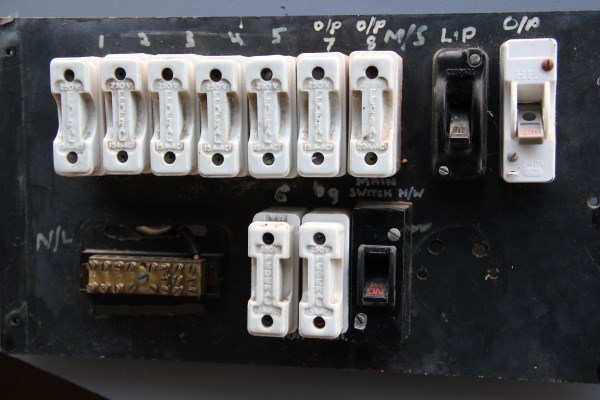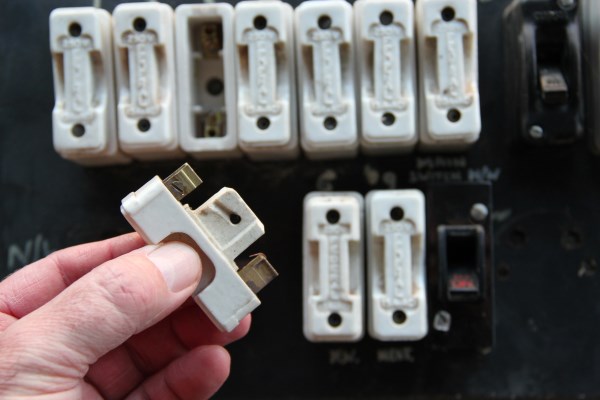There are still plenty of rewireable fuses in use today. Here’s how to safely locate and repair a blown fuse.
When you lose power to lights, power points, stove or hot water it’s time to check your fuses. Your switchboard will look something like the photo above, with a number of separate fuses and switches. Each individual fuse protects one circuit.
There are two parts to a porcelain fuse, the wedge and the base. The wedge is the removable part which carries the fuse wire. The wedge will have a number on the front showing the amp rating. The base is the part that’s attached to the switchboard. To repair a blown fuse you must remove the wedge from the base and replace the fuse wire.
If your switchboard is clearly labelled it will be a lot easier to find and repair a fault.
First Step, Turn Off The Main Switches
In the picture above there are three main switches. The switches are marked hot water, light and power and off-peak. Switchboard labels are not always accurate so the safest way is to turn off all the switches. Off is usually the up position, down is on.
Locate The Right Fuse
Test some light switches and then use a plug in appliance, such as a hair dryer or lamp in a few power points to ensure the power is off. Then start pulling out the fuse wedges one by one.
Test each fuse wire by pulling it with your fingernail as overloading can cause the wire to melt in the middle and it can look ok at first glance. When a fuse blows due to a fault such as a short circuit the wire can be completely gone and the fuse wedge is usually blackened in parts.
When you find the faulty fuse, replaced the wire with the appropriate size. Loosen the brass screws on the fuse wedge and curl the fuse wire in a clockwise direction around the first screw and tighten it again. Thread the wire through the hole in the middle of the wedge and wind the wire around the second screw and tighten again.
Make sure the wire is clipped off close to the screw. You don’t want any long tails of fuse wire hanging out. Push the fuse wedge back into the base and turn on the main switches.
Important Safety Tip
Don’t look at the fuses when you turn the switches back on. Fuses blow for a reason and if that reason is a short circuit then the fuse you just repaired will blow immediately and possibly with a blinding flash, as bright as a welder. Look away to prevent possible damage to your eyes.
If your fuse is blowing due to overloading you need to rearrange which power points you use for appliances (particularly heaters), to spread the load over different circuits.
If the fuse blows straight away when you turn on the main switch you probably have a fault that requires an electrician.
Rewireable fuses are no longer available as new parts and while the wedges can be replaced and rewired, a faulty fuse base must be replaced with a circuit breaker.
Your local electrician probably has a box of second hand fuse wedges in their workshop so it’s a good idea to get a couple of spare fuse wedges already loaded with the right sized wire and keep them in the fuse box for easy replacement if needed.
Take a sample of your existing fuse wedge with you as there are several different types and they are not interchangeable.
If your problem seems to be more than a simple blown fuse, if the fuse wedges are hot to touch, or if there are sparks or a burning smell, turn off the main switches and call us straight away on 6331 4711.


